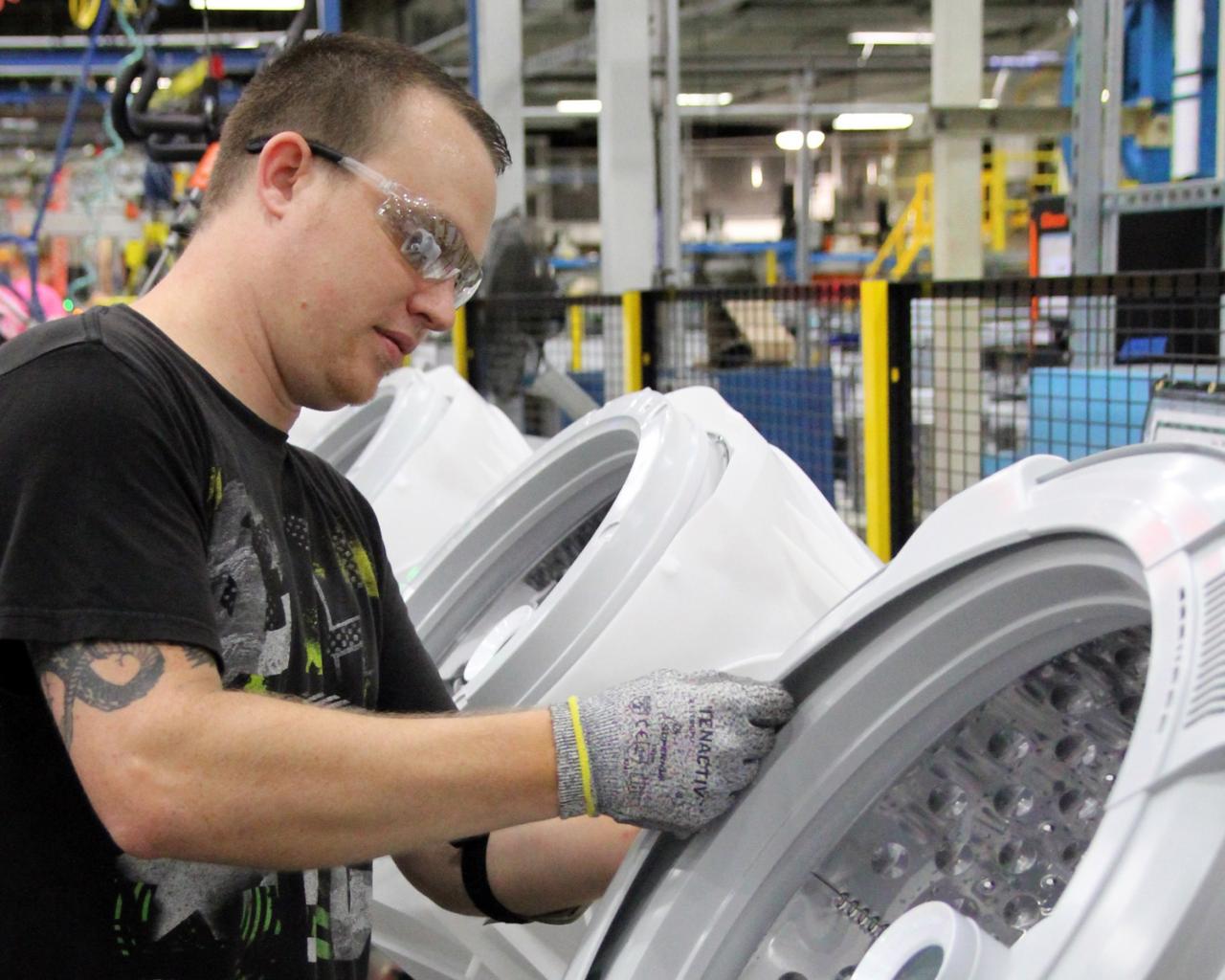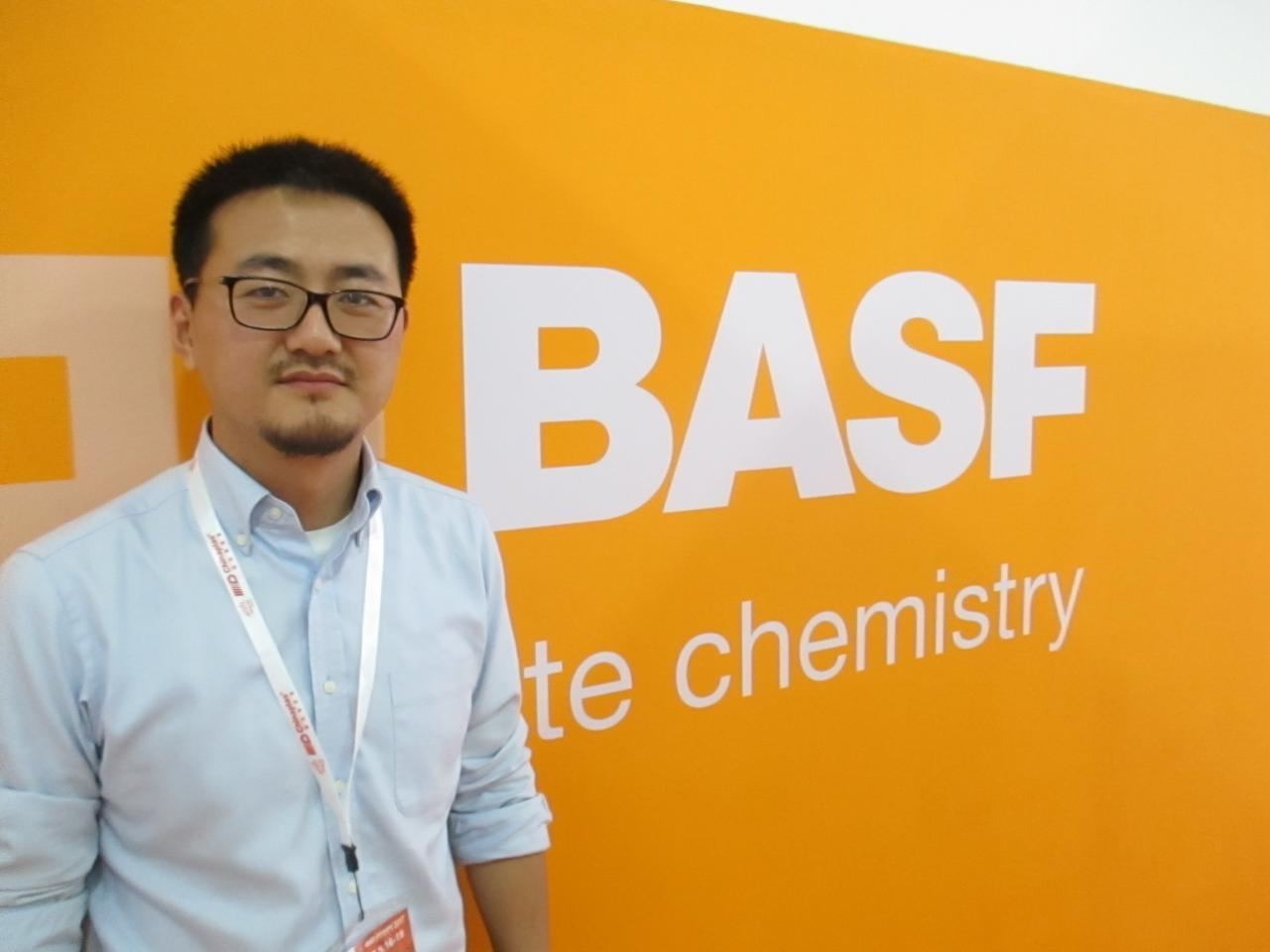June 3, 2016 Updated 6/3/2016
Email Print

GE Appliances GE Appliances recently invested $ 100 million at its Appliance Park facility in Louisville, Ky., for production of top-loading washers. The site is becoming part of China’s Haier Group.
Shanghai — China’s Haier Group has become one of the world’s largest makers of home appliances, and in January announced it was expanding in North America, buying GE Appliances and its massive Louisville, Ky., headquarters and manufacturing base for $ 5.4 billion.
Haier, which had $ 32.4 billion in sales last year, said the GE acquisition would substantially expand its footprint in the Western Hemisphere, giving the company 12,000 GE employees (96 percent of whom work in the United States) and nine manufacturing plants in five U.S. states.
Appliance Park in Louisville is so big it has its own ZIP code, and GE has spent $ 1 billion upgrading the site.
As well, the companies said Haier’s acquisition would help grow GE’s appliance business in China.
At the Chinaplas trade show in late April in Shanghai, Plastics News sat down with Jay Chengjie Piao, creative director for the Haier Open Innovation Center. Haier set up the center in 2009 to build stronger links with companies, universities and research institutes around the world. It has five R&D centers globally.
Piao talked about how Haier wants its product development model to be more collaborative with its supply chain, and said plastics companies should think more about the needs of their customer’s customers.
The interview was in the booth of BASF SE, where Piao had earlier given a speech at a Chinaplas forum on design and innovation.
Q: As I understand the Open Innovation Center, you want a very wide platform to get ideas for innovation. Tell me about the process.
Piao: First of all, I am not a designer. I have an engineering background. Our department was established in 2009. We have several stages. The first stage is more purely technology oriented. We try to know the latest technology coming from all over the world. There are several ways to do that. We have achieved very good communication with big companies like BASF. We have regular innovation forums or innovation days.
The second way we are doing that is to create relationships with universities and R&D institutes all over the world. The third thing we try to do is we try to create networks with some kinds of makers, or relationships with intellectual property owners and small startups. We’re trying to build a network to absorb all the good technology and share it inside of Haier. We are trying to build networks in more than 16 countries. We really want to be the first company in China to know some new technology. That’s the goal.
Q: So what is a typical day like for you?
Piao: It’s very hard to describe. There’s no regular setup. Every day we are trying to do something different. We have designers, we have researchers. We have scientists, materials engineers. The people have many workshops. Sometimes we take the engineers and go outside, doing interviews with regular users. We are trying to do user research. We will go to the store to watch and monitor how people will buy the product.
Q: How has the open innovation model changed product development for Haier?
Piao: The first thing is it’s quicker. It’s shortened the R&D process. In another way, it will bring in more ideas. For example, if we have a project, like some kind of refrigerator or furniture, before we would be doing this in house. Now after we get a rough idea, we will go to furniture manufacturer together. They will also contribute some options or ideas.
Q: Can you talk about how you work with the supply chain, with materials suppliers and injection molders?
Piao: Actually, honestly, for the very big suppliers, such as if they supply a big volume component, that still falls within the traditional way. We have a purchasing department; we have a buying system. Right now what we are trying to do is we hope that we can change the relationship. It’s not purely part A and part B. The supply chain company could be involved in the idea stage. The supply chain company can be involved in this process and we can create a product concept together. If we do that there is no bidding process. Because this supplier company contributes to this idea and they get the rights to be the exclusive supplier on that product. That is something we are doing now.
Q: You spoke at the Chinaplas Design Forum today. Was there a particular message you are trying to deliver to people at Chinaplas?
Piao: I find that something could be changed for these traditional materials or chemical companies. They are trying to change. They still have a very big distance to the end user. To go from the material to the end user, they need some product manufactured by Haier. If we can contact with the end user directly, we can create some opportunity.
Q: Are you saying you would like the plastics companies to have more contact with the end user?
Piao: Yeah, not like in a regular way, but they should understand what are the trends, what are the needs of the clients of their clients. We have expertise in making the right product but we do not know the materials. We know one or two kinds of materials. But we cannot know what are the capabilities of the plastic manufacturers. If they can know the trends of the end users, they can generate good plastic materials. We can work together to make new products.
Q: What role does Haier see for 3-D printing and other types of additive manufacturing?
Piao: I think in the future, we do believe that for home appliance manufacturing, the customized demand will come out more frequently. I think 3-D printing could be one kind of technology to satisfy that demand.

Steve Toloken Piao
Q: I want to ask about intellectual property issues. China has a reputation as a place where that can be a real challenge.
Piao: IP issues are a very common problem in China. Recently I read a newspaper article from Silicon Valley. They have a theory right now. The real good startup does not consider IP right now because if they move fast enough, there is no competition. So in China we should on the one hand, we should try to improve the intellectual property environment. On the other hand, we should create a system where the big companies would do technological innovation.
Q: How would the open innovation model be applied to GE Appliances?
Piao: What they are doing is quite similar to Haier. The structure is a little different but the philosophy is quite similar. They are also trying to do open innovation, to cooperate with a partner outside. I feel it is a trend for appliance companies.
Q: You said your background is not in design but engineering?
Piao: Yes, in telecommunications. We have many staff, their background is in engineering, but we have many training processes for them to help them understand what is the design process and the way designers think. We also have designers and we try to give them knowledge about the materials and technology.
Q: This is your first time at Chinaplas. What is your impression?
Piao: I hung around in the morning. I saw many opportunities. We are very focused on IoT [Internet of Things] and smart appliances. We saw different kinds of materials. Many ideas came out. But it’s still a very traditional industry. The companies in here are not ready to open up everything to the outside.
Q: What makes you say it’s a very traditional industry?
Piao: I would compare them to especially the internet companies in China. What [internet companies] do is try to open the resources they have to create more value.
More industrial companies should be asking their people: How can you share your technology with people outside? I think the designfabrik [a BASF industrial design center opening in Shanghai, announced during Chinaplas] is a very good idea. They start from the designer, it’s a very good target.




























